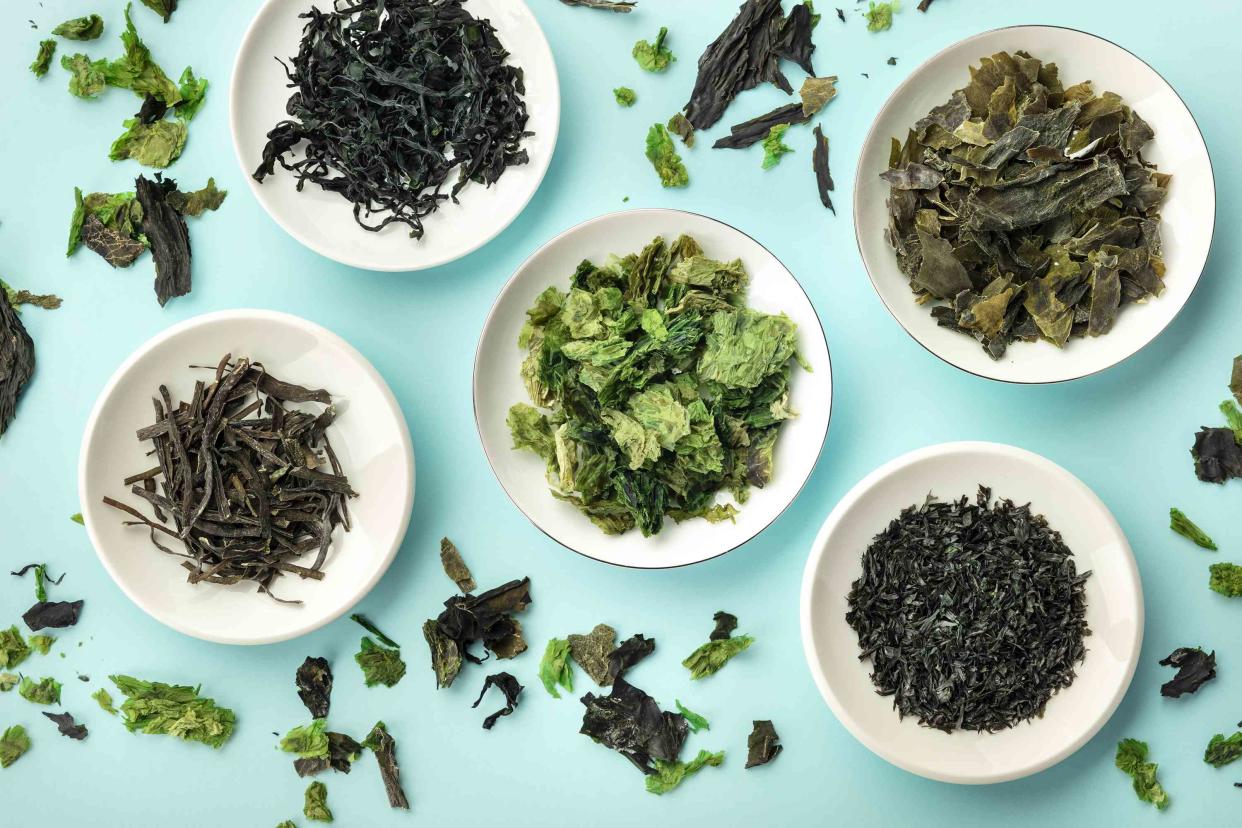These Two Items Are Now Superfoods, Per More Than 750 Registered Dietitians
New year, new superfoods!

Plateresca/Getty Images
It’s time to make room on your grocery list, because there are two new superfoods in town! Thanks to the Pollock Communications and Today's Dietitian "What's Trending in Nutrition" survey, we can say hello to a new pair of foods that are packed with health benefits—AKA superfoods. While the foods themselves are nothing new, their status as superfoods—foods that are especially nutrient-dense—is.
The newbies, which are joining a group of eight already existing superfoods including seeds, blueberries, and more, are aquatic greens and non-dairy milks. Coming in seventh and tenth respectively, this duo is replacing fun fruits and kale, which each had a spot on last year’s list of top superfoods.
To determine this group of 10 healthy foods, Pollock Communications collected insight from 757 registered dietitian nutritionists (RDNs), who also predict that consumers will shop for foods that are affordable and value-based, easily accessible and convenient, and support immunity. This marks the first time in over a decade that the survey has consisted entirely of plant-based foods.
:22 Easy Vegan Dinner Recipes to Start Your Plant-Based Journey
“Consumers are more aware than ever of the benefits food can provide for gut health and immune function. As consumers face higher costs at the grocery store, they'll be looking for affordable food and snacks that still provide valuable health benefits,” explains Louise Pollock, President of Pollock Communications. "Our survey findings reflect how consumer behaviors are shifting as COVID-19 restrictions loosen, remote work remains, and inflation rises—from prioritizing affordable foods to continued interest in snacking.
In addition to the eight repeating superfoods from last year—fermented foods, seeds, blueberries, avocado, nuts, leafy greens, green tea, and ancient grains—there are two new superfoods to discover. Learn more about aquatic greens and non-dairy milks below!
:16 Superfoods You Can Keep in the Freezer—and How to Cook With Them
Aquatic Greens
Aquatic greens refers to veggies that grow in bodies of water. Examples of aquatic greens include algae, seaweed, and sea moss. While the exact set of benefits differs from green to green, generally speaking, aquatic greens are an excellent source of iodine, copper, calcium, magnesium, manganese, vitamin B2, and vitamin C.
Kelp, a variety of seaweed, is sustainable and contains health-promoting anti-inflammatory compounds and antioxidants. To that end, the aquatic green is being studied, along with other varieties of seaweed, for its effects on blood sugar regulation, heart disease, and gut health, among other chronic diseases. To eat more seaweed, try this spring fried rice.
Non-Dairy Milks
You’d be hard-pressed to walk through your local supermarket and find any less than three non-dairy milk varieties—be it oat milk, almond milk, or even pistachio milk. As is the case with aquatic greens, the exact nutritional benefits depend on your plant-based milk of choice, but there are plenty of benefits to go around.
For example, soy beans, which are used to make soy milk, contain essential amino acids, high levels of protein, and iron. Additionally, soy milk has lower fat and cholesterol levels than regular milk, and has been scientifically shown to reduce blood pressure and lower inflammation. Similarly, hemp milk contains 10 essential amino acids, plus omega-3 and omega-6 fats, and may protect against heart disease. To consume more plant-based milk, add it to your cereal and/or coffee each morning.
For more Real Simple news, make sure to sign up for our newsletter!
Read the original article on Real Simple.
